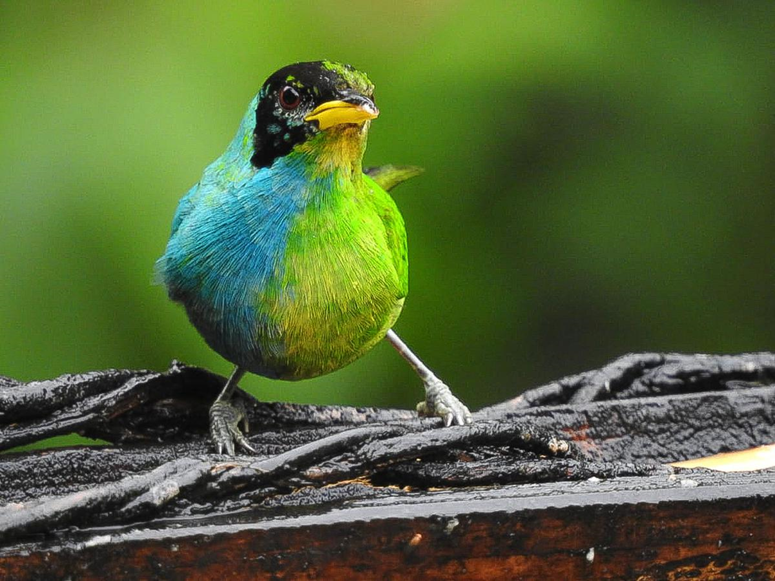Half female and half male, a rare bird seen in Colombia

The inhabitants of the region where it was observed were accustomed to seeing green females and blue males fluttering, but never with one and the other color at the same time.
It has the blue plumage of the males on the right and the green plumage of the females on the left: observed in Colombia, the bird represents a rare case of a bird presenting characteristics of both sexes, reveals a recent study
The bird was first observed in 2019 in a municipality in the Caldas department in north-central Colombia. This is the first observation of a living individual with characteristics of both sexes in this species, which can reach 14 centimeters in length and is found from Mexico to Brazil.

In an article published in December in the Journal of Field Ornithology, experts assure that this is the first case in more than 100 years of bilateral gynandromorphism observed in an emerald tanager (chlorophanes spiza). The inhabitants of the region where it was observed were accustomed to seeing green females and blue males fluttering, but never with one and the other color at the same time.
" A mistake "
“I was lucky enough to see a species of bird arrive that for us was very different from anything we had seen,” says John Murillo, the amateur photographer who spotted it for the first time in 2019 before observe it for more than a year with experts. “He was behaving very strangely because he only came (to the feeder) alone, so I started following him,” he remembers.

“It generally avoided other individuals of its own species, and others also avoided it […] It therefore seems unlikely that this individual had any chance of reproducing,” the study concludes. “In birds, the phenomenon is thought to result from an error during meiosis (cell division) of the egg, followed by double fertilization by separate sperm,” explains the study about a condition that is also sometimes found in insects and crustaceans.
Source: websites

